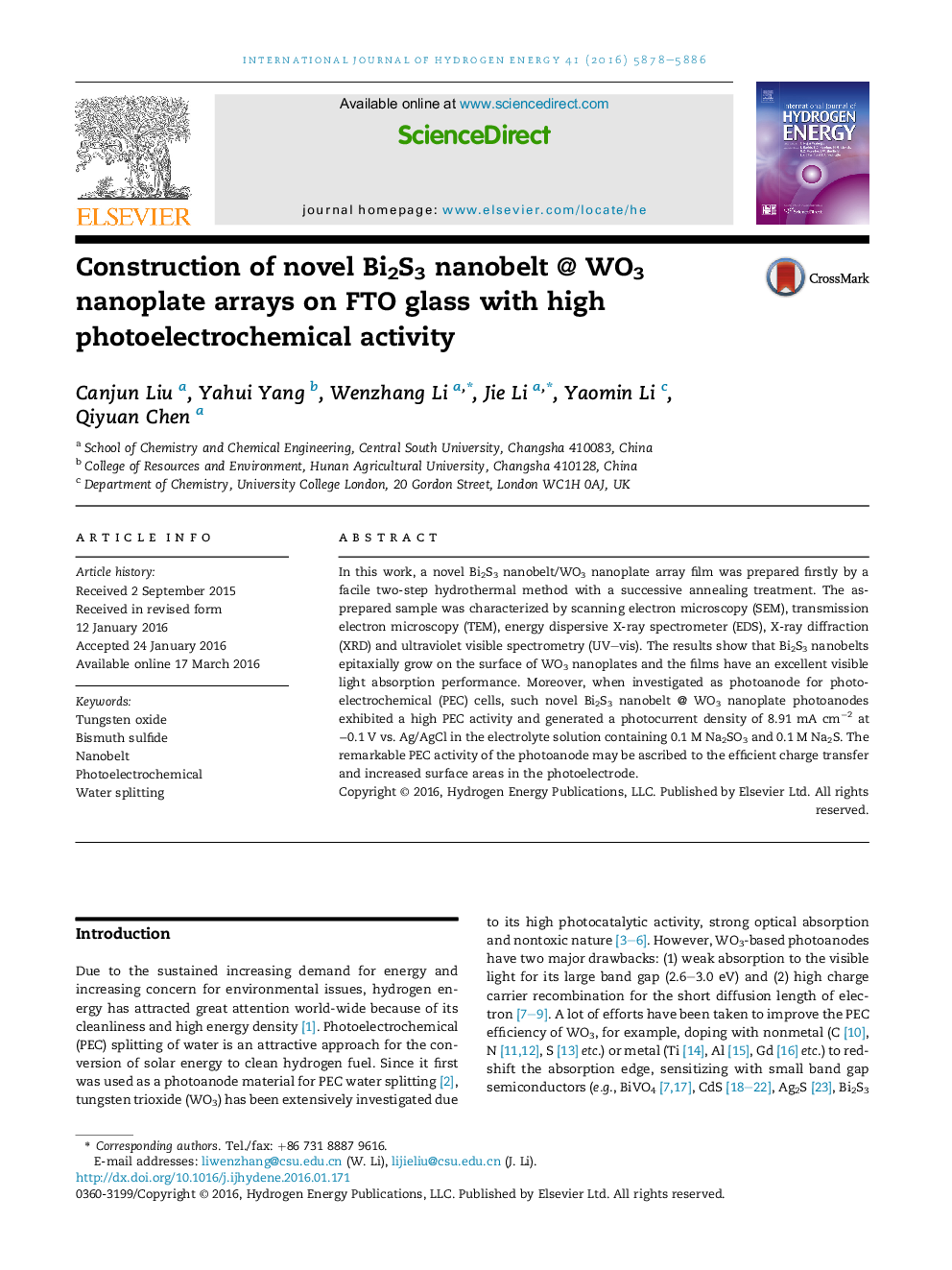| Article ID | Journal | Published Year | Pages | File Type |
|---|---|---|---|---|
| 1273591 | International Journal of Hydrogen Energy | 2016 | 9 Pages |
•A novel Bi2S3 nanobelt/WO3 nanoplate arrays film was fabricated by a facile two-step hydrothermal method.•Bi2S3 nanobelts epitaxially grow on the surface of WO3 nanoplates.•A high photocurrent density could be obtained from the film photoelectrode.
In this work, a novel Bi2S3 nanobelt/WO3 nanoplate array film was prepared firstly by a facile two-step hydrothermal method with a successive annealing treatment. The as-prepared sample was characterized by scanning electron microscopy (SEM), transmission electron microscopy (TEM), energy dispersive X-ray spectrometer (EDS), X-ray diffraction (XRD) and ultraviolet visible spectrometry (UV–vis). The results show that Bi2S3 nanobelts epitaxially grow on the surface of WO3 nanoplates and the films have an excellent visible light absorption performance. Moreover, when investigated as photoanode for photoelectrochemical (PEC) cells, such novel Bi2S3 nanobelt @ WO3 nanoplate photoanodes exhibited a high PEC activity and generated a photocurrent density of 8.91 mA cm−2 at −0.1 V vs. Ag/AgCl in the electrolyte solution containing 0.1 M Na2SO3 and 0.1 M Na2S. The remarkable PEC activity of the photoanode may be ascribed to the efficient charge transfer and increased surface areas in the photoelectrode.
Graphical abstractA novel Bi2S3 nanobelt/WO3 nanoplate arrays film was prepared by a facile two-step hydrothermal method with a successive annealing treatment, exhibited an excellent photoelectrochemical activity.Figure optionsDownload full-size imageDownload as PowerPoint slide
